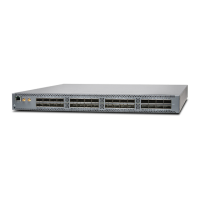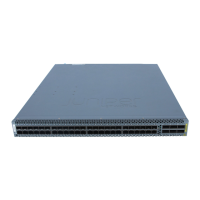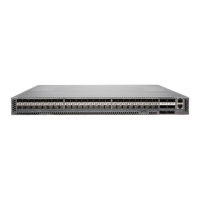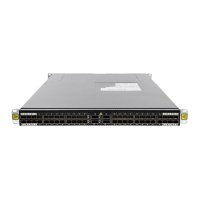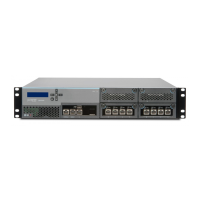mixed mode to participate in the VCF. You can optionally avoid the downtime that accompanies a leaf
device reboot by manually setting the leaf device into fabric mode and into or out of mixed mode, zeroizing
the device at that point if necessary, and manually rebooting the device before interconnecting it into the
VCF.
Preprovisioned Virtual Chassis Fabric Configuration
In a preprovisioned configuration, you deterministically control the devices in your VCF by associating
each device’s serial number to a member ID and role.
The advantage of configuring a VCF using a preprovisioned configuration is that you can more explicitly
control which devices are added to your VCF, and in what roles. At the same time, as with an
autoprovisioned VCF, preprovisioned VCFs support automatic VCP conversion. As part of the VCP
conversion process, when leaf devices that have been zeroized or are in factory default mode are
interconnected to configured spine devices, the VCF can automatically detect and, if needed, set fabric
and mixed modes. If fabric mode or mixed mode settings are automatically updated, the devices are also
rebooted automatically. Alternatively, you can avoid a potentially unexpected automatic device reboot
(and associated down time) by manually configuring the fabric or mixed mode setting on the device and
manually rebooting it before interconnecting it into the VCF. For best results when adding devices to a
preprovisioned VCF, we recommend manually setting fabric and mixed modes, zeroizing or restoring the
factory default configuration if necessary, and manually rebooting the devices being added before
interconnecting them into the VCF.
The disadvantage of using a preprovisioned configuration is that the configuration process requires more
manual steps than the autoprovisioned configuration process.
Nonprovisioned Virtual Chassis Fabric Configuration
CAUTION: We discourage nonprovisioned VCF configuration. You can configure all
aspects of a VCF using autoprovisioned or preprovisioned configuration.
Nonprovisioned VCF configuration should only be used by VCF experts in specialized
scenarios.
A nonprovisioned VCF is the default method for creating a VCF; it is the configuration mode used when
a VCF has not been configured into autoprovisioned or preprovisioned mode.
In a nonprovisioned VCF, member roles are determined by a primary-role election algorithm. The first
value checked by the primary-role election algorithm is the primary-role priority value. The switches with
the highest primary-role priority values assume the primary and backup Routing Engine roles in a VCF.
If two or more devices have the same primary-role priority value and are candidates for the Routing Engine
role, the primary-role election algorithm uses other parameters to determines which device is elected as
the Routing Engine. See Understanding Virtual Chassis Fabric Components.
6
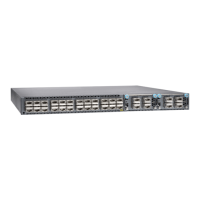
